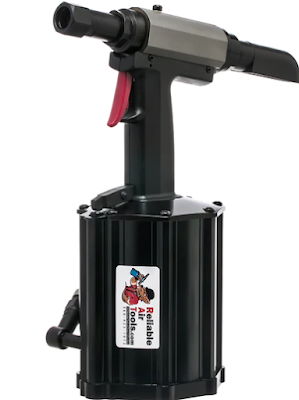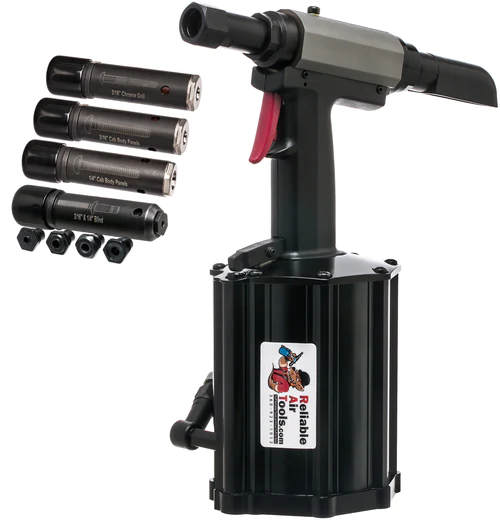Choosing the Right Rivet Gun for Your Project
When installing structural rivets for a significant construction or manufacturing project, it is crucial to have the appropriate tools. Rivets provide vibration-resistant and permanent fastening solutions, but you need an appropriate rivet gun to install them properly. Here's an overview of the main rivet gun options to help you select the best one for your needs.
When working with rivets, using the proper lock bolt gun is essential for successful
results. Selecting the appropriate gun will allow for efficient and quality
riveting work. Here are some tips for choosing the right Huck rivet gun:
What are the main types of rivet guns?
There are primarily three types of guns: air, cordless, and
manual. You can select them based on how often you install the rivets.
Air Rivet Guns:
If you regularly indulge in rivet installations, then
air-powered rivet guns are an easy option for you. Air-powered riveters provide
fast and continuous rivet installations with consistent results, making them
the quick and hassle-free option. While these tools are sometimes called
pneumatic rivet tools or hydro-pneumatic rivet guns, we refer to them as
"air rivet guns" for simplicity's sake.
Pros of Air-powered guns: They are easy to use
and are available in both manual and cordless options. Professional air guns
have a rivet vacuum and holding capacity, allowing for the vacuuming up and
holding in place of the rivet while you align it with the hole. Once the rivet
is installed, the gun automatically extracts the waste pin to the collection
bottle. It means you don't have to tilt the gun backward.
Cons: These guns need an air
compressor, which can limit mobility.
If you are looking for rivet guns or economical rivet
nut tools! Look no further than Reliable Air Tools. We provide you with
efficient, cost-effective solutions for your projects.
Manual Rivet Tools:
Manual rivet tools are great where power is not available.
These are also cost-effective and easy to use. They work by adding the rivet to
the tool end, squeezing the handles, and retracting. There are many different
types of hand rivet tools available. To use it, you grip one handle and push
the other towards it with steady pressure. Another option is the long-handled
lever type, which requires you to apply pressure on both handles and push them
toward each other.
Pros: A cost-effective method for the DIY
gurus.
Cons: You need to apply muscle power.
Cordless Rivet Guns: These types of
guns are powered by a battery and allow you to install rivets from anywhere. It
is what makes it an ideal option for building sites. Like an air gun, it is
also simple and easy to use. All you have to do is point and shoot.
Pros: You can take them anywhere.
Cons: They may be costly and not as powerful
as an air rivet.
Taking the time to properly evaluate your riveting
application needs and research the specifications of the various rivet gun
models will allow you to select the right tool for optimal fastening results,
quality, and efficiency. With the appropriate Huck gun, you can achieve
successful and long-lasting riveted connections on your industrial projects.





Comments
Post a Comment